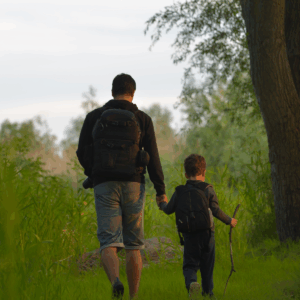Retirement didn’t get better because of one big decision.
It got better because of a pile of small, almost boring choices I started making in my 50s. None of them looked dramatic at the time. But stacked together, they gave me more energy, time, and freedom when I finally closed the office door.
Here are the ones that mattered most.
1) Practiced living on less a year early
A friend called this a “test landing.” Twelve months before I left work, I set my checking account to receive only what my retirement income would be. My paychecks still arrived, but they were diverted to savings automatically. I wanted the habit of living on the future number before the future arrived.
The first month stung. I said no to a couple of dinners out and stopped letting random subscriptions nibble the account. By month three, I wasn’t thinking about it. By month six, I found “hidden slack”—library books instead of impulse buys, park picnics with the grandkids instead of pricey attractions, coffee dates over brunch. When retirement began, my lifestyle already fit. Less whiplash. More peace.
If you try this, start with three months at 80% of your target, then move to 100%. It’s like lowering a plane gently instead of dropping it.
2) Automating the boring money
I did two small automations in my 50s that changed everything later. First, debt on rampage. I set automatic extra payments on the car and the smallest lingering card balance. No heroics—just steady overpaying. Second, I auto-routed raises and bonuses to savings before I could see them.
The psychology is simple: what you don’t feel, you don’t miss. By the time I retired, the car was long gone, the card was history, and the cushion was there. Boring? Absolutely. But “boring” in your 50s becomes “breathing room” in your 60s.
3) Putting my mornings on rails
I used to treat mornings like a catch-all inbox. Email, headlines, errands. My brain felt scattered by 10 a.m. In my 50s I built a tiny routine: light, water, motion.
I step outside for daylight, drink a glass of water, then walk ten minutes around the block before touching a screen. It sounds trivial. It isn’t. That little loop set my mood and sleep on a better cycle. When the grandkids stay over, they join me—little hands in mine, counting birds.
Starting days on purpose made the transition out of full-time work feel anchored rather than adrift.
Related Stories from The Artful Parent
- 9 “selfish” hobbies that will make you a better parent than any parenting book
- 9 things lower-middle-class parents say to their kids that upper-class parents would never dream of saying
- The Christmas gifts your grandkids will remember 30 years from now aren’t the expensive ones. They’re these 8 things that cost almost nothing
4) Strength training twice a week, no excuses
I don’t lift like an athlete. I lift like a grandfather who wants to get off the floor without a dramatic sound effect. Two short sessions each week: squats to a chair, pushups on the counter, rows with dumbbells, 30 seconds of balance. That’s it.
The payoff is everywhere. Groceries don’t feel like a chore. Long walks are fun again. When a grandchild launches themselves at me, I’m ready. I’ve mentioned this before but mobility is the closest thing to a retirement superpower. Build it while you’re still busy so it’s there when life slows down.
5) Scheduling relationships like they mattered (because they do)
I used to tell myself I’d see friends “soon.” Soon kept slipping. So I picked two anchors and put them on repeat: Tuesday coffee with a neighbor, Thursday call with an old colleague. I also blocked a standing “family hour” for whoever could make it—sometimes my adult kids, sometimes the grandkids for a quick playground visit.
On a calendar, it looks simple. In real life, it’s a safety net for the spirit. When I retired, I didn’t have to rebuild community from scratch. It was already in motion.
Try this: message three people today. Set one low-effort, standing plan with each. Keep it for six weeks. Relationships grow in the soil of consistency.
6) Learning one new thing at a time

My 50s were busy. I couldn’t go back to school, but I could learn in slices. I picked one topic per season—vegetable gardening, basic photography edits, Spanish basics, even how to fix a squeaky door without calling someone. Ten minutes most days. That’s the rule.
- I retired in Thailand at 67—here’s why it was the best decision of my life - Global English Editing
- 8 hobbies that secretly make you more influential in social circles - Global English Editing
- People who have no close friends in their 70s usually went through these 8 childhood experiences without realizing it - Global English Editing
Tiny learning kept my brain playful and gave me useful tools for later. Now, retirement days have fewer “What should I do?” moments. There’s always a skill to practice or a small project to improve. It’s not about certificates. It’s about curiosity on a timer.
7) Owning one modest car and walking more
I traded my pride for practicality. One car. Paid off. Fewer bells and whistles. Then I started walking on purpose—errands that were a mile or less, I did on foot. The choice seemed small. The ripple effects weren’t.
I met neighbors. I learned the shady streets. I discovered two parks and a bakery with the best sourdough in town. And the money saved on insurance, gas, and maintenance? It quietly funded experiences that actually felt like living—day trips with the grandkids, a weekend train ride, art classes.
If your life allows it, try “walk-first” days twice a week. It shrinks stress and expands your map.
8) Decluttering fifteen minutes at a time
I didn’t “do” minimalism. I did a kitchen timer and one drawer a day. Papers, duplicates, gadgets, mystery cords. Fifteen minutes, music on, trash bag nearby. Stop when the timer dings.
By the time retirement arrived, the house fit our life instead of memorializing every era we’d lived through. Downsizing decisions were easier. I knew what we used, what we loved, and what was waiting for a better home. The grandkids now have floor space for blanket forts. I have a desk that invites writing instead of groaning under piles.
The secret? Momentum. Fifteen minutes today makes tomorrow lighter. Lighter homes feel more like retreats, which is what you want when you’re home more.
9) Saying “yes” to one volunteer shift
Purpose doesn’t always announce itself. Sometimes it hides in a two-hour shift.
In my 50s, I started volunteering once a month at a local reading program. Then it became twice a month because I liked it. I wasn’t saving the world. I was shelving books, listening to early readers practice, and wiping glue from tables after craft time.
The quiet benefit showed up after retirement. That room gave me structure and community right away. On weeks when the calendar looked blank, I still had a place to be useful. And when the grandkids ask what I do, I get to say, “I help kids fall in love with stories.” That sentence alone is worth the time.
10) Cleaning up my digital life and paperwork
Future me was very grateful I tackled this early. I got a password manager. I named digital folders like a normal person. I set reminders for bills and renewals. I scanned the important papers and put the real copies in one labeled box: wills, insurance, titles, medical info. My adult kids know where it lives.
Is it thrilling? No. But it lowers everyone’s background anxiety. And when something goes wrong—as it does—finding the right document in two minutes keeps a wobble from becoming an emergency.
If this feels overwhelming, set a weekend “power hour” for four weeks. Passwords week one, bills week two, documents week three, sweep and label week four. Done is the goal, not perfect.
11) Building a “family first” calendar
I used to say yes to everything at work and squeeze family into the gaps. In my 50s I flipped it: I penciled in the family stuff first. School concerts, weekend breakfasts, kid-swap help for my adult children, and grandkid adventures. Even a simple “Sunday soup and board games” got a box on the calendar.
Work still fit. Chores still happened. But the important people got my best energy instead of leftovers. That habit slid beautifully into retirement. Weeks feel purposeful because they’re stitched together by real moments—reading on the couch with a five-year-old, walking to the park, cheering at a soccer game, telling the same bedtime joke for the hundredth time.
One tip that helped: I created a shared calendar for the adults. We’re not perfect at using it, but it cuts the “Who’s free?” back-and-forth in half.
Conclusion
If you’re reading this in your 40s or early 50s, start tiny. One automation. One walk. One drawer. One friend on the calendar. If you’re already in your 60s, it isn’t too late. Pick two ideas and make them yours this month. The compounding is real.
As I stroll our local park with a grandchild’s hand in mine, I don’t think about spreadsheets or “retirement strategy.” I notice the ducks, the light on the water, the fact that my knees don’t complain as much as they could. I feel grateful I chose the small things when nobody was watching.
Your turn—what’s one little choice you can make this week that your future self will thank you for?



